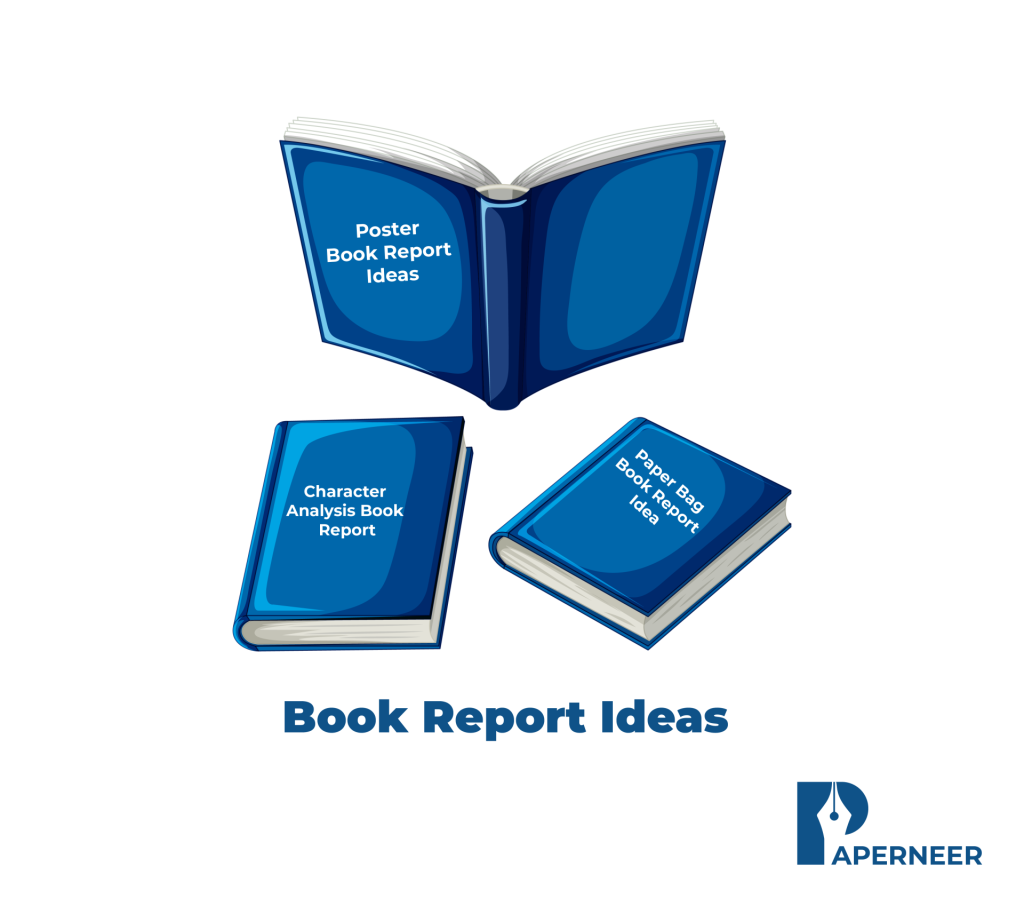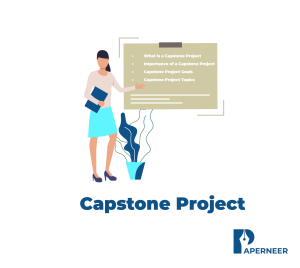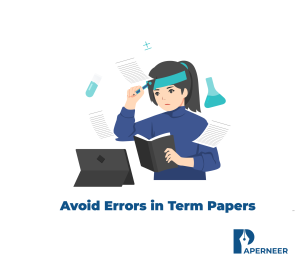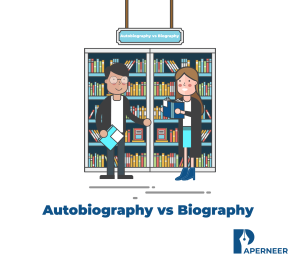Capstone Project – A Complete Guide A capstone project is sometimes the...
Read MoreBook Report ideas

Looking for creative book report ideas to make your project stand out? Rather than sticking to a typical written outline, strive for distinctive approaches to showcase your understanding. Produce a timeline of events to spotlight key plot points or style a personality diary that shares insights from a character’s perspective.
Craft a book jacket with a custom cover, summary, and author bio for visual charm. Active learners will assemble a story box of objects representing essential moments from the book. If you relish analysis, compare the book to its moving-picture show adaptation or explore themes associated with degree character dynamics in an essay.
Collaborative book report ideas embody dramatizing scenes or conducting fictitious character interviews. These interactive ways do not solely create reports pleasurable to form but conjointly facilitate deepening your affiliation to the story. Explore these ideas to remodel your book report into an enticing masterpiece!
In this blog brings you:
How to create an engaging Book Report?
Did you recognize there are so many inventive ways to gift a book report? Whereas the standard approach involves writing, there are several methods to make your report stand out.
Here’s a way to effectively prepare a book report:
Select a Book and Take Notes
Start by choosing a book and reading it fastidiously. As you scan, carefully note necessary components like the characters, plot, main themes, and unforgettable quotes. Take care to record your reactions and thoughts concerning the story similarly. These observations can assist you later in crafting your analysis.
Perceive the rules
Before diving into your report, review any specific directions or necessities provided by your teacher. Completely different formats or varieties of book reports could demand particular components, like a close character analysis or thematic exploration. Knowing these pointers ensures your Work meets expectations.
Produce a top-level view
Organizing your concepts beforehand is essential. Draft a top-level view that breaks your report into clear sections, like an introduction, summary, analysis, and conclusion. This structure targets your writing and makes the method an abundant electric sander.
Write Your Report
Using your definition as a guide, begin writing the report. Open with an attractive introduction that grabs attention and introduces the book’s title and author. Give a taciturn outline of the book’s small print, take away into your analysis of the themes and characters, and end with a thoughtful conclusion. Embrace your insights, like what you learned or found intriguing concerning the book.
Revise and Polish
After finishing the draft, return your Work to refine it. Seek for synchronic linguistics, punctuation, and writing system mistakes. Also, ensure that your concepts flow logically and area units are expressed clearly. Writing is a necessary step to make your report polished and skilled.
Add inventive components
To make your book report stand out, incorporate inventive options. Consider different formats like oral shows, coming up with packaging, creating a mobile representation of the story, or crafting a visually appealing timeline. These additions enhance your Work’s charm and make it interactive and pleasant for your audience.
Following these steps, you’ll remodel a customary book report into an attractive and unforgettable project.
Book Report Ideas for 2nd Grade
2nd graders’ book reports should be straightforward, fun, and engaging. By incorporating creative thinking and active activities, young learners connect more with the stories they browse. Here is a unit of some fantastic book report concepts tailored for 2nd-grade students:
Illustrated Story outline
Second graders like to draw, making this activity an ideal mixture of art and comprehension. Students will produce drawings of key scenes from the book, capturing vital moments within the story. Below every illustration, they write one or two sentences explaining what’s happening. This approach permits them to check the tale while summarizing it in their own words.
Character Puppets
Bring characters to life with fun puppets! Victimization paper luggage, craft sticks, or maybe socks, students will produce puppets of the book’s characters. They will then act out a favourite scene or conjure a brief play impressed by the story. This active activity encourages imagination and storytelling skills.
Favourite Character Poster
For this activity, students choose their favourite character from the book and build an advertisement for them. The poster will embrace the character’s name, a drawing, and an inventory of traits or unforgettable moments. This project helps students understand the character’s role and temperament, fostering a stronger association with the story.
Book Report marker
A unique and sensible plan is to style a marker to support the book. On one facet, students will illustrate a scene or the book cowl. Conversely, they write several sentences regarding the book’s main plan or what they like most about the story. This activity promotes summarizing skills while making one thing helpful.
Inventive Collage
Collages are an excellent approach for college kids to understand a book precisely. Victimization magazine cutouts or hand-drawn pictures produce a collage representing the book’s themes, setting, or characters. Afterwards, they will make a case for their selections to the category, adding an associate interactive part to their report.
Why These Ideas Work?
These book report concepts are suitable for 2nd graders. As a result, they create gratifying tasks and encourage creative thinking and comprehension. By combining art, writing, and storytelling, students will explore the book in ways which suit their learning vogue. These also enable them to share their Work with classmates, building confidence and fostering a love for reading.
Book Report ideas for high school
High school book reports demand deeper analysis and artistic approaches. These book report concepts can facilitate students’ gift their understanding fascinatingly and thoughtfully:
Literary Themes Presentation
Choose a central theme like love, justice, or sacrifice. Produce a PowerPoint presentation analyzing how the author develops the theme and its influence on the story. This approach encourages critical thinking and robust instructive skills.
Interview with a personality
Write a mock interview with a key character from the book. Embody challenging questions about their motives, choices, and emotions. Craft elaborated responses nonmoving within the book’s content to showcase your understanding of the character’s complexness.
Alternate Ending
Reimagine the book’s ending by writing a brand new version that gives a novel twist. Make a case for however your various perspectives address unresolved queries or add depth to the story.
Timeline of Events
Construct a timeline that visually represents the book’s major events. Use colours, arrows, and pictures to make the timeline appealing while clearly outlining the plot’s progression.
Book-to-Movie Comparison
If the book features a film adaptation, compare the 2. Analyze variations, value the movie’s fidelity to the first, and argue that version you favour, supporting your opinion with examples.
Character Development Journal
Create a series of diary entries based on the protagonist’s attitude or another key character. Explore their thoughts, feelings, and development over time, reflecting their Journey at intervals in the story.
These concepts facilitate students to interact critically while adding an ingenious bit to ancient book reports.
Conclusion
Creating interesting book report ideas is all about mixing ability with analysis. Whether or not you’re a second critic crafting character masks or a high school student diving into literary themes, the secret is to showcase your understanding of the book in an exceedingly distinctive and fascinating means. By victimizing these book report ideas, you’ll not solely impress your lecturers; however, you will conjointly fancy the method of transferring a story to life. Attempt the following pointers for your next assignment, and watch your book report stand out!
Say goodbye to Mistakes in Term Papers
Avoid Errors in Term Papers Writing a theme may be a vital tutorial task that needs careful designing and...
Read MoreUnraveling the Stories: Autobiography vs Biography
Autobiography vs Biography Understanding the excellence between autobiography and biography is crucial for...
Read More




